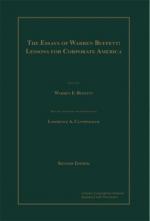
|
| Name: _________________________ | Period: ___________________ |
This quiz consists of 5 multiple choice and 5 short answer questions through Accounting and Valuation.
Multiple Choice Questions
1. During what year were the Berkshire shares to be traded on the New York Stock Exchange?
(a) 1986.
(b) 1975.
(c) 1988.
(d) 1999.
2. How many shares each did the shareholders of the company have to have in order to be listed on the exchange?
(a) 200.
(b) 500.
(c) 1000.
(d) 100.
3. Berkshire invested in companies with excellent economic prospects and outstanding __________.
(a) Stock prices.
(b) Managers.
(c) Ideas.
(d) Websites.
4. What did GAAP stand for, according to the text in the book?
(a) Generally argued accounting principles.
(b) Generally accepted accounting principles.
(c) Generally agreed accounting principles.
(d) Generally accepted available principles.
5. The margin of ________ was the cornerstone of investment success, according to Graham.
(a) Error.
(b) Reward.
(c) Safety.
(d) Risk.
Short Answer Questions
1. Buffett and Munger invested based on company operating results and not on ____________.
2. Which business did Munger and Buffett decide to close, despite their best efforts?
3. Buffett criticizes __________ market theory as be does not believe it to be a truth.
4. What was the piece of advice that Buffett took to heart from the athlete?
5. The board was ultimately responsible for any _______'s performance in the companies they held.
|
This section contains 196 words (approx. 1 page at 300 words per page) |

|




